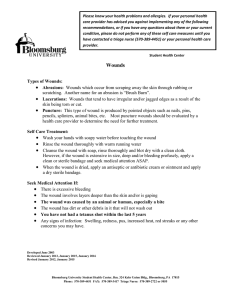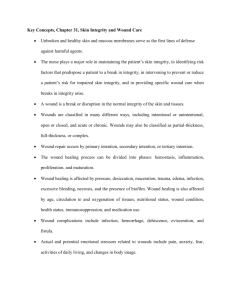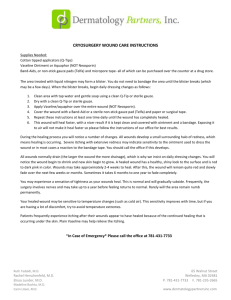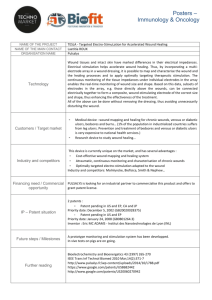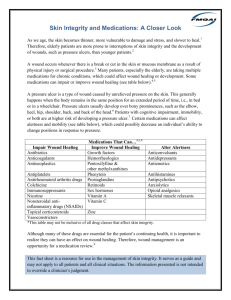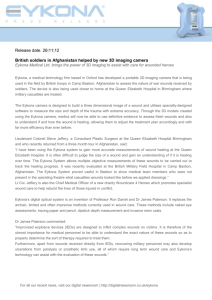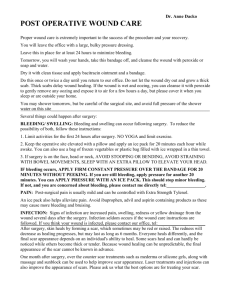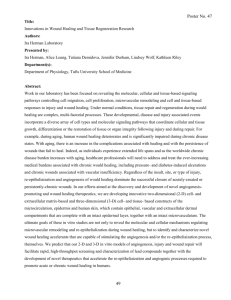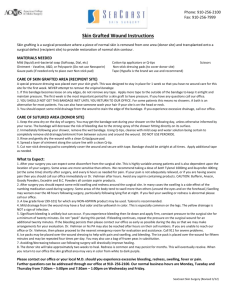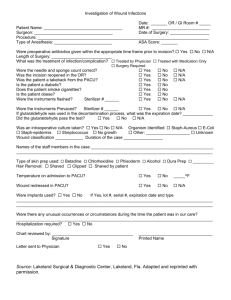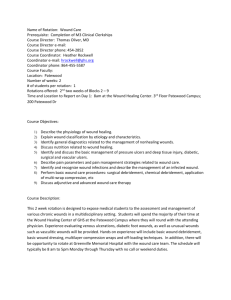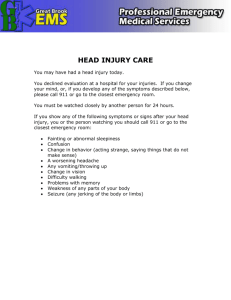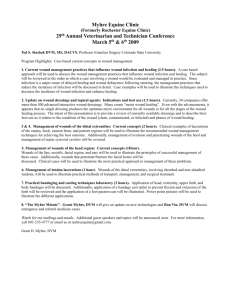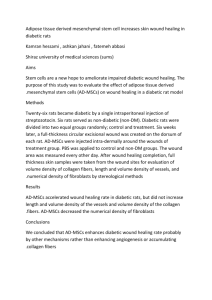Stapled Scalp wound care
advertisement
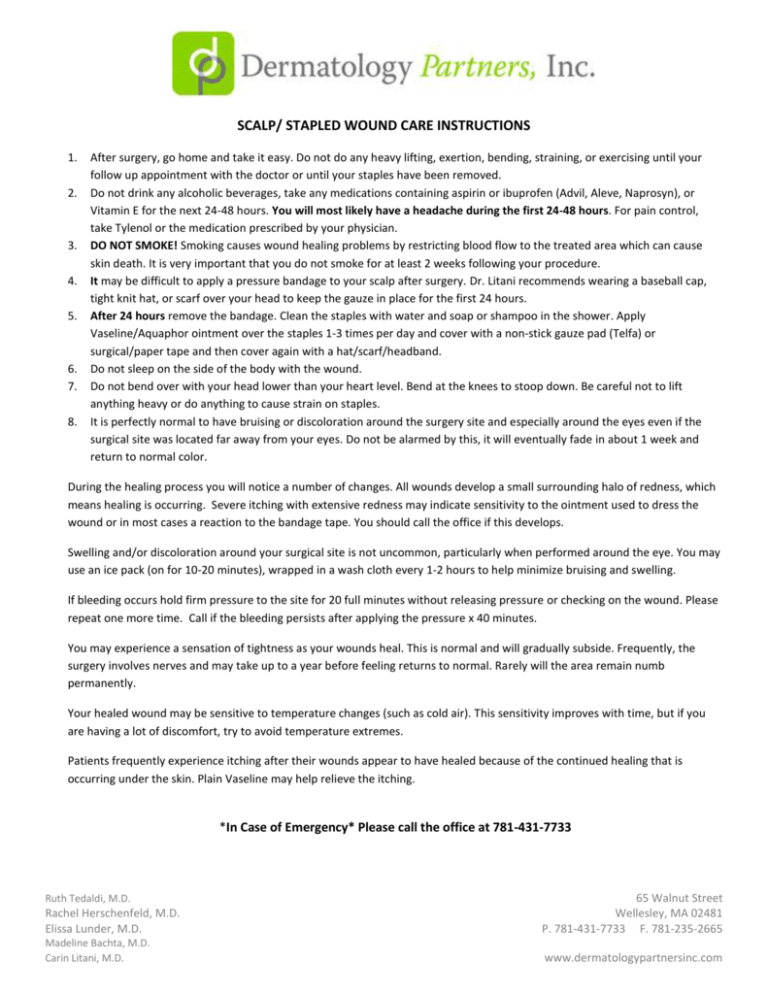
SCALP/ STAPLED WOUND CARE INSTRUCTIONS 1. 2. 3. 4. 5. 6. 7. 8. After surgery, go home and take it easy. Do not do any heavy lifting, exertion, bending, straining, or exercising until your follow up appointment with the doctor or until your staples have been removed. Do not drink any alcoholic beverages, take any medications containing aspirin or ibuprofen (Advil, Aleve, Naprosyn), or Vitamin E for the next 24-48 hours. You will most likely have a headache during the first 24-48 hours. For pain control, take Tylenol or the medication prescribed by your physician. DO NOT SMOKE! Smoking causes wound healing problems by restricting blood flow to the treated area which can cause skin death. It is very important that you do not smoke for at least 2 weeks following your procedure. It may be difficult to apply a pressure bandage to your scalp after surgery. Dr. Litani recommends wearing a baseball cap, tight knit hat, or scarf over your head to keep the gauze in place for the first 24 hours. After 24 hours remove the bandage. Clean the staples with water and soap or shampoo in the shower. Apply Vaseline/Aquaphor ointment over the staples 1-3 times per day and cover with a non-stick gauze pad (Telfa) or surgical/paper tape and then cover again with a hat/scarf/headband. Do not sleep on the side of the body with the wound. Do not bend over with your head lower than your heart level. Bend at the knees to stoop down. Be careful not to lift anything heavy or do anything to cause strain on staples. It is perfectly normal to have bruising or discoloration around the surgery site and especially around the eyes even if the surgical site was located far away from your eyes. Do not be alarmed by this, it will eventually fade in about 1 week and return to normal color. During the healing process you will notice a number of changes. All wounds develop a small surrounding halo of redness, which means healing is occurring. Severe itching with extensive redness may indicate sensitivity to the ointment used to dress the wound or in most cases a reaction to the bandage tape. You should call the office if this develops. Swelling and/or discoloration around your surgical site is not uncommon, particularly when performed around the eye. You may use an ice pack (on for 10-20 minutes), wrapped in a wash cloth every 1-2 hours to help minimize bruising and swelling. If bleeding occurs hold firm pressure to the site for 20 full minutes without releasing pressure or checking on the wound. Please repeat one more time. Call if the bleeding persists after applying the pressure x 40 minutes. You may experience a sensation of tightness as your wounds heal. This is normal and will gradually subside. Frequently, the surgery involves nerves and may take up to a year before feeling returns to normal. Rarely will the area remain numb permanently. Your healed wound may be sensitive to temperature changes (such as cold air). This sensitivity improves with time, but if you are having a lot of discomfort, try to avoid temperature extremes. Patients frequently experience itching after their wounds appear to have healed because of the continued healing that is occurring under the skin. Plain Vaseline may help relieve the itching. *In Case of Emergency* Please call the office at 781-431-7733 Rachel Herschenfeld, M.D. Elissa Lunder, M.D. 65 Walnut Street Wellesley, MA 02481 P. 781-431-7733 F. 781-235-2665 Madeline Bachta, M.D. Carin Litani, M.D. www.dermatologypartnersinc.com Ruth Tedaldi, M.D.


